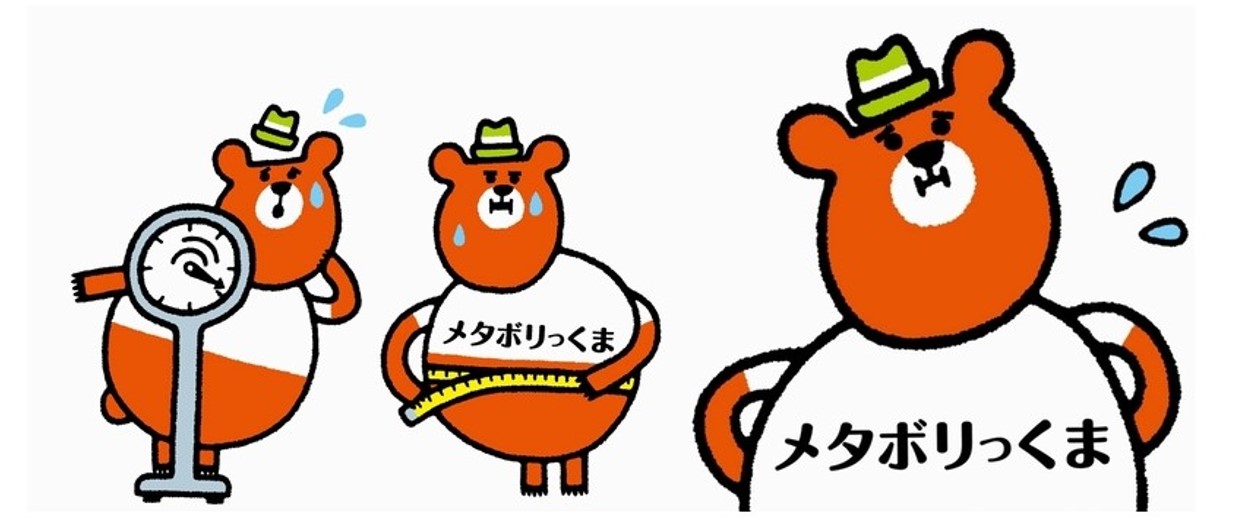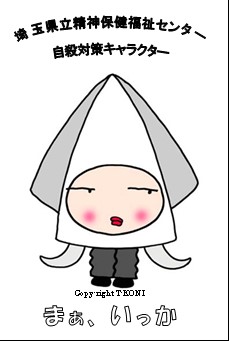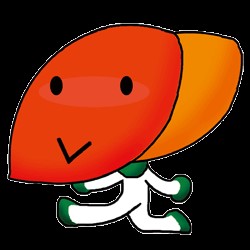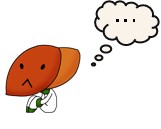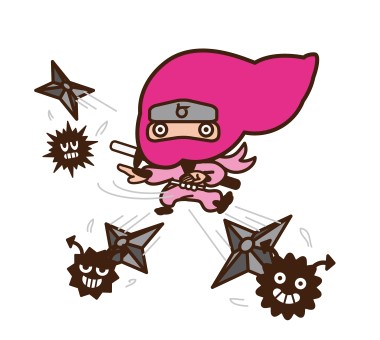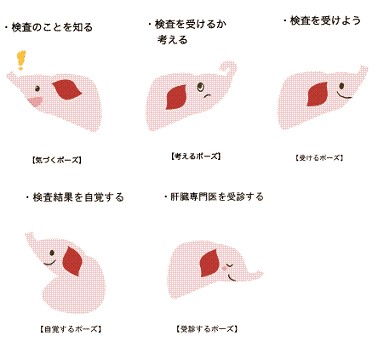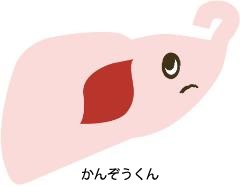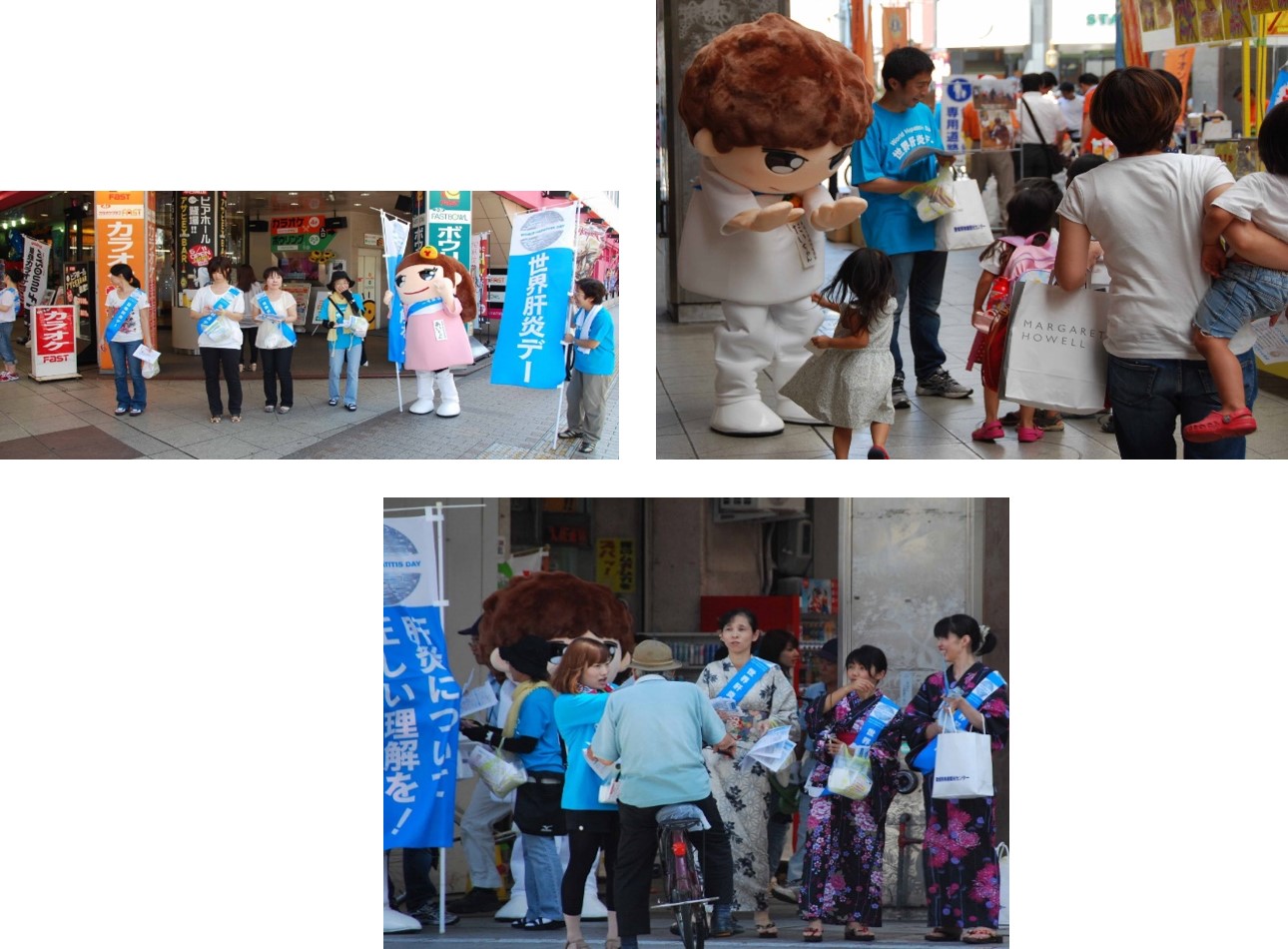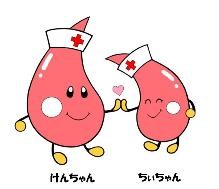What do you get when you cross a squid, a ninja, and an obese black bear?
If you said winning disease education campaign, you’re right!
These and numerous other characters have been adopted to help answer health and welfare questions in Japan such as:
- “How do you convince a patient they need treatment for a disease no one knows exists?”
- “How do you educate physicians regarding rare or controversial illnesses so that they take the initiative to discuss treatment options with patients?”
- “How to you solicit an involved, emotional response for what are essentially public service messages?”
Previously we explored the use of animated characters in commercial branding and promotional strategies of pharmaceutical manufacturers, as well as the factors that have contributed to the strikingly dissimilar role of animated characters in Japan vs. western countries.
However, implementation of animated characters is not unique to directly commercial pharmaceutical campaigns. Rather, animated mascots have been adopted in Japan to boost awareness of numerous illnesses and conditions, as well as facilitate top-of-mind awareness of fundamental health-related issues. Such campaigns are often spearheaded at the local government level, or not-for-profits. In some cases commercial pharmaceutical manufacturers also play a part in these awareness efforts.
In part 1 of this series we addressed the factors that make animated character-centric strategies so effective in Japan. The underlying strategy surrounding mascot use in non-commercial campaigns is not dissimilar to those employed for commercial branding, however with their own set of distinct goals. Non-commercial character-centric health related campaigns can be broken into three general categories:
1. Top of Mind Awareness of Common Illnesses and Conditions
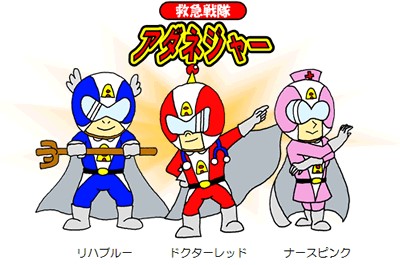
One purpose of non-commercial health related campaigns is simply boosting top-of-mind awareness of illnesses or conditions that the public as a whole is generally already aware of. Not unlike their western counterparts, these campaigns urge the public to get regular checkups and maintain an awareness of their personal health conditions as well as those of family members. Advertisements in subways and on the sides of local busses feather Nagoya City’s “Metaboli-kuma” 「メタボリっくま」https://www.city.nagoya.jp/kenkofukushi/page/0000040664.html (roughly translated “overweight bear”) urging everyone over 40 years old to keep a vigilant watch on their weight. Likewise, Hokkaido prefecture’s owl mascot HAIHo-kun https://www.hok-hiv.com/ encourages the public to educate themselves on HIV/Aids, and Saitama’s“Ma, Ikka” 「ま
ぁ、いっか」(a play on words with the same pronunciation between “squid,” and “Oh well.”) promoting mental health awareness and suicide prevention (one does question whether a depressed caricature who appears disinterested in life is really the best way to reach out to people who suffer from depression, but I digress…) The “Adaneja” superhero team of the Hirosaki Stroke and Rehabilitation Center fight the dark powers of the “Adarzo” clan, who is constantly trying to hurt the health of the public by causing strokes.
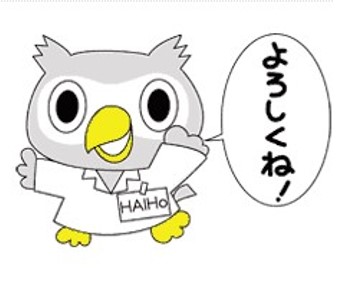 Mascots adopted for educational campaigns hold many similarities with their commercial counterparts. Like Pyon-chan and many of the other characters used in commercial pharmaceutical branding, many awareness campaign mascots are also drawn from Japanese mythology. HAIHo-kun, for example, was taken from Japan’s ancient Ainu mythology, where a god in the form of an owl was said to be the protector of villages in Japan’s ancient Ainu culture.
Mascots adopted for educational campaigns hold many similarities with their commercial counterparts. Like Pyon-chan and many of the other characters used in commercial pharmaceutical branding, many awareness campaign mascots are also drawn from Japanese mythology. HAIHo-kun, for example, was taken from Japan’s ancient Ainu mythology, where a god in the form of an owl was said to be the protector of villages in Japan’s ancient Ainu culture.
As many of these campaigns are facilitated by regional government and volunteer organizations, the mascots do not have nearly the level of national awareness as many of their commercial counterparts. However, often seen hugging children at local events, adorning related websites and even plastered on city buses, they can be thought of as effective within their regional target markets.
2. Education and Awareness of Rare Illnesses
While character-centric campaigns are often launched targeting illnesses or diseases of which the public is generally aware and focus more on maintaining top-of-mind awareness or encouraging the public to take action getting regular checkups, in many cases mascots are employed to educate and increase awareness of rare or often misunderstood illnesses. One of the best examples of this is Hemophilia’s “Ninja no Katamaru-kun”, 「忍者のかた丸君」(not to be confused with Takamaru-kun, the mascot for Hirosaki City).Ninja no Katamaru-kun was created by Bayer as a means of educating young children with hemophilia about their disease, as well as educating friends, family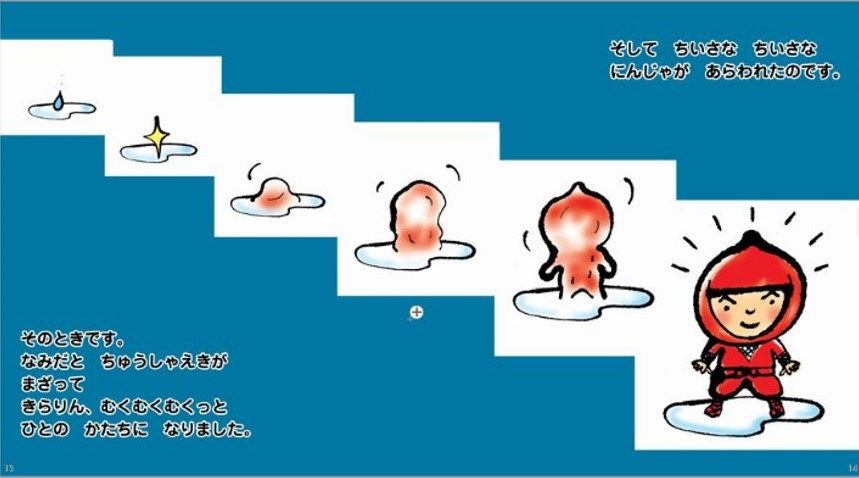 and classmates of young hemophilia patients. Not only has Katamaru-kun been successful in educating children about hemophilia, but also giving a new level of confidence and self-esteem to young hemophilia patients. Now a household name in Japan’s hemophilia community, the Katamaru-kun campaign has been extremely successful in boosting awareness among those directly and indirectly affected by the disease.
and classmates of young hemophilia patients. Not only has Katamaru-kun been successful in educating children about hemophilia, but also giving a new level of confidence and self-esteem to young hemophilia patients. Now a household name in Japan’s hemophilia community, the Katamaru-kun campaign has been extremely successful in boosting awareness among those directly and indirectly affected by the disease.
3. Education and Promotion of Unrecognized & Stigmatized Illnesses
Beyond illnesses that are simply rare and misunderstood, there are also many conditions that have yet to gain mainstream acceptance in Japan, if not worldwide. These illnesses (often psychological in nature thus difficult to definitively diagnose) suffer both from awareness issues, as well as physician bias and general social stigmas often associated with such illnesses (particularly in Japan). Thus, prior to introducing medication to treat such illnesses, there is often a need for grassroots campaigns addressing not only general education regarding the condition, but also the preconceptions social stigmas are based upon.
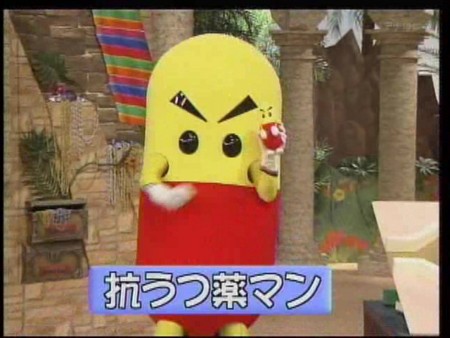 However, because of the nature of these illnesses as unrecognized and stigmatized, there are still relatively few examples of related public awareness campaigns in Japan, much less mascots spearheading the cause. While “Ma, Ikka” promotes general mental health and suicide prevention in Saitama prefecture, there have been only a handful of examples where characters are being employed in this category, such as the “Kouutsu-man” 「抗うつ病マン」(Anti-depressant man) https://d.hatena.ne.jp/iDES/20090617/1245253115 featured on NHK (however there is very little information on this character and he has not been featured anywhere else) or on NHK since its initial debut. Thus, many characters in this category serve in the same short-lived, ancillary capacity as their counterparts in western campaigns.
However, because of the nature of these illnesses as unrecognized and stigmatized, there are still relatively few examples of related public awareness campaigns in Japan, much less mascots spearheading the cause. While “Ma, Ikka” promotes general mental health and suicide prevention in Saitama prefecture, there have been only a handful of examples where characters are being employed in this category, such as the “Kouutsu-man” 「抗うつ病マン」(Anti-depressant man) https://d.hatena.ne.jp/iDES/20090617/1245253115 featured on NHK (however there is very little information on this character and he has not been featured anywhere else) or on NHK since its initial debut. Thus, many characters in this category serve in the same short-lived, ancillary capacity as their counterparts in western campaigns.
Non-Japanese Campaigns Compare and Contrast
 While characters have been employed in various non-commercial awareness campaigns in other countries, similar to commercial pharmaceutical campaigns outside Japan, rather than employing original mascots, existing cartoon characters such as Snoopy and Garfield are often adopted in such campaigns which,while successful in temporarily attracting attention, fail to provide an original “brand” image, or become the “face” of the target illness. Rather, the character adopted in the campaign has a tendency to become the focus rather than the illness itself. https://www.creativereview. co.uk/cr-blog/2014/april/cartoons-go-bald-to-promote-cancer-awareness When original characters are employed, they often serve short-lived, ancillary roles and generally do not appear to be designed with longevity in mind, in some cases developed with
While characters have been employed in various non-commercial awareness campaigns in other countries, similar to commercial pharmaceutical campaigns outside Japan, rather than employing original mascots, existing cartoon characters such as Snoopy and Garfield are often adopted in such campaigns which,while successful in temporarily attracting attention, fail to provide an original “brand” image, or become the “face” of the target illness. Rather, the character adopted in the campaign has a tendency to become the focus rather than the illness itself. https://www.creativereview. co.uk/cr-blog/2014/april/cartoons-go-bald-to-promote-cancer-awareness When original characters are employed, they often serve short-lived, ancillary roles and generally do not appear to be designed with longevity in mind, in some cases developed with 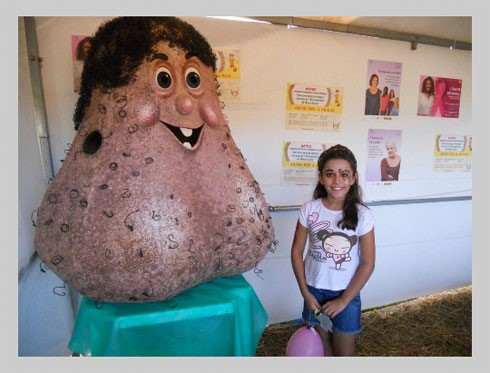 crude realism sometimes to the point of being fairly unsettling, capitalizing more on short term shock value versus cute and cuddly, thorough character development. A recent character implemented by AAPEC (Associação de Assistência às Pessoas com Câncer) https://www.aapec.org.br/2013-04-18-vicosa/ intended to increase awareness of testicular cancer quickly went viral, and could be said to have been successful in gaining international attention, but perhaps not the kind of attention AAPEC was really hoping for. (Incidentally, introduction of such a character in Japan would likely land the creator in jail on obscenity charges).
crude realism sometimes to the point of being fairly unsettling, capitalizing more on short term shock value versus cute and cuddly, thorough character development. A recent character implemented by AAPEC (Associação de Assistência às Pessoas com Câncer) https://www.aapec.org.br/2013-04-18-vicosa/ intended to increase awareness of testicular cancer quickly went viral, and could be said to have been successful in gaining international attention, but perhaps not the kind of attention AAPEC was really hoping for. (Incidentally, introduction of such a character in Japan would likely land the creator in jail on obscenity charges).
Pharma Needs and Implications for Future Promotional Efforts
While the campaigns discussed in the current article are not directly commercial in nature, the strategies illustrated have clear implications for pharmaceutical manufacturers, particularly as relates to the third category, “Education and Promotion of Unrecognized & Stigmatized Illnesses.” Aside from the task of overwhelmingly complex regulatory environment, as well as financial of the centralized healthcare system, pharmaceutical manufacturers are tasked with tackling awareness issues, overcoming the preconceptions or misconceptions of patients as well as physicians and society in general. While similar challenges may exist in virtually all markets, the central role that social relationships play in all aspects of life in Japan make overcoming social stigmas a particularly daunting prospect for those endeavoring to introduce treatment options for rare, unknown and potentially controversial illnesses. However, as the pharmaceutical market for commonly accepted diseases and illnesses is increasingly saturated, the most lucrative opportunities lie in the uncharted territory of so-called “new” and uncommon disease treatment. This is no secret, as reflected by the global pharmaceutical industry shift in development efforts from treatments targeting enormous populations to rare or relatively unknown conditions (according to Bloomberg BusinessWeek, 19 of the 27 drugs approved by the USFDA in 2013 were so-called “specialty” medications). As such, the need for grass roots education regarding such illnesses will be essential to paving the road for the entry of such pharmaceuticals into international markets. In Japan, that means first and foremost, giving a cute, cuddly animated face to the disease.
Here are a few other non-commercial illness or health related characters found in Japan:
/////////////////////////////////////////////////////////////////////////////////////////////////////////////////////////////////////////////////
1. The Ministry of Health, Labor and Welfare (厚生労働省)has adopted this cute liver-shaped character as the face of Hepatitis in Japan (some characters are more creative than others). https://www.mhlw.go.jp/bunya/kenkou/kekkaku-kansenshou09/hepatitis_hukyu.html
2.A regional representative for Hepatitis, Totori Prefecture’s ninja with the loosely liver-shaped head dress is often depicted protecting citizens from smiley-faced hepatitis germs with his throwing stars. https://www.pref.tottori.lg.jp/179168.htm , https://www.siseidodesign.jp/works/character/17_kanzo.html
3. Kanzo-kun 「かんぞうく」is the hepatitis mascot for the Tokyo Bureau of Social Welfare and Public Health. His name is a play on words between Kanzo for liver (肝臓)and Zo for elephant (象)。He is pictured in various stages of Hepatitis awareness. https://www.fukushihoken.metro.tokyo.jp/kensui/etc/kanen/character.html
4.In Ehime prefecture, The Ehime University Hospital’s Ai-chan and Dai-chan are often seen waving to passer-bys during promotional events for hepatitis awareness. https://www.m.ehime-u.ac.jp/hospital/liver/?p=826
5.The doughey-eyed lovable blood cell duet Ken-chan and Chi-chan promote blood donation for the city of Iwaki in Fukushima. https://www.city.iwaki.fukushima.jp/bukyoku/hokenfukushibu/somu/index.html
6. Miyagi prefecture’s “cancer prevention” mascots urge you to go get your cancer check-up. https://www.pref.miyagi.jp/soshiki/situkan/gantop.html
/////////////////////////////////////////////////////////////////////////////////////////////////////////////////////////////////////////////////
【ご意見ご感想がございましたら、こちらのメールアドレスまでご連絡ください。: goiken@sugataresearch.com】

